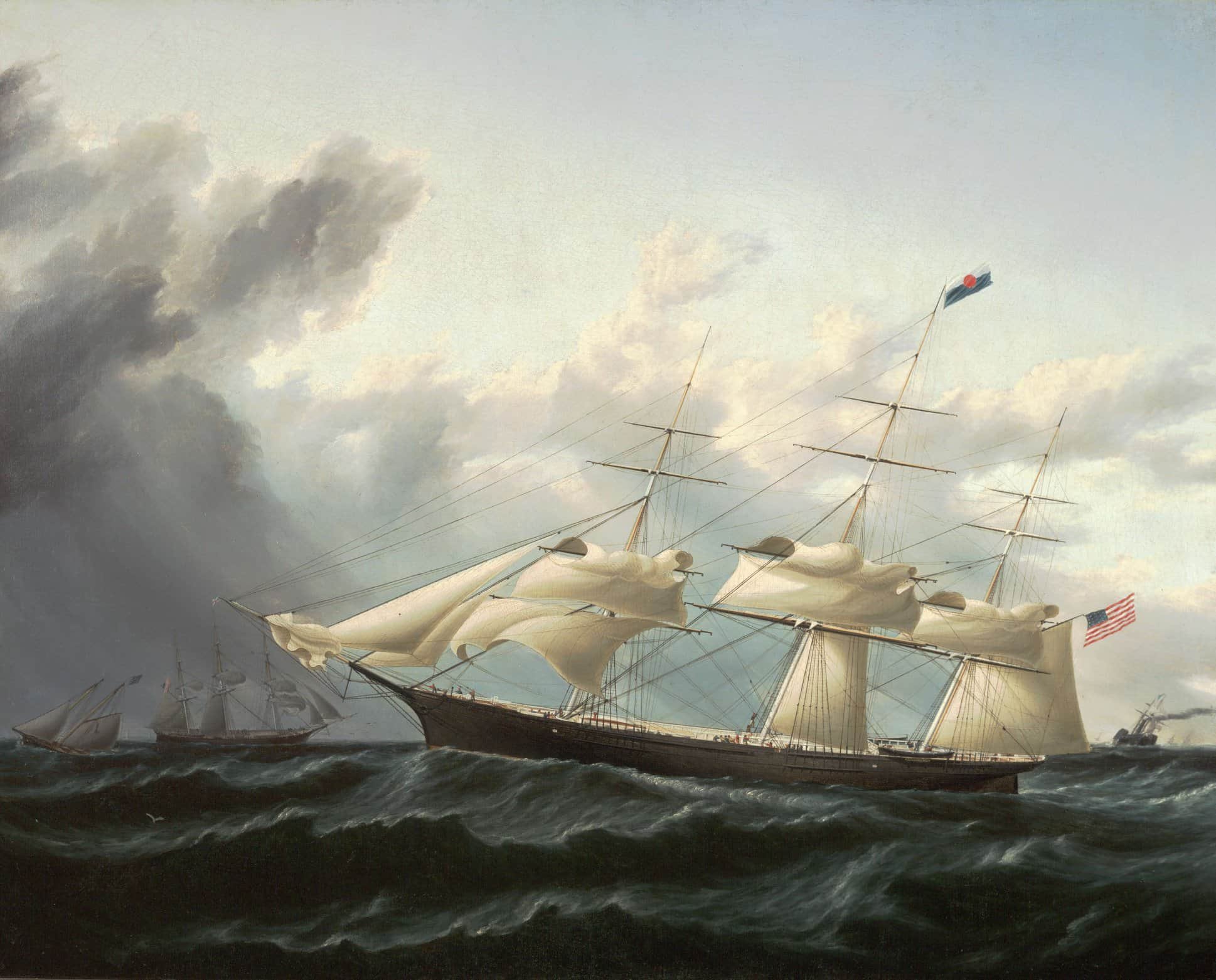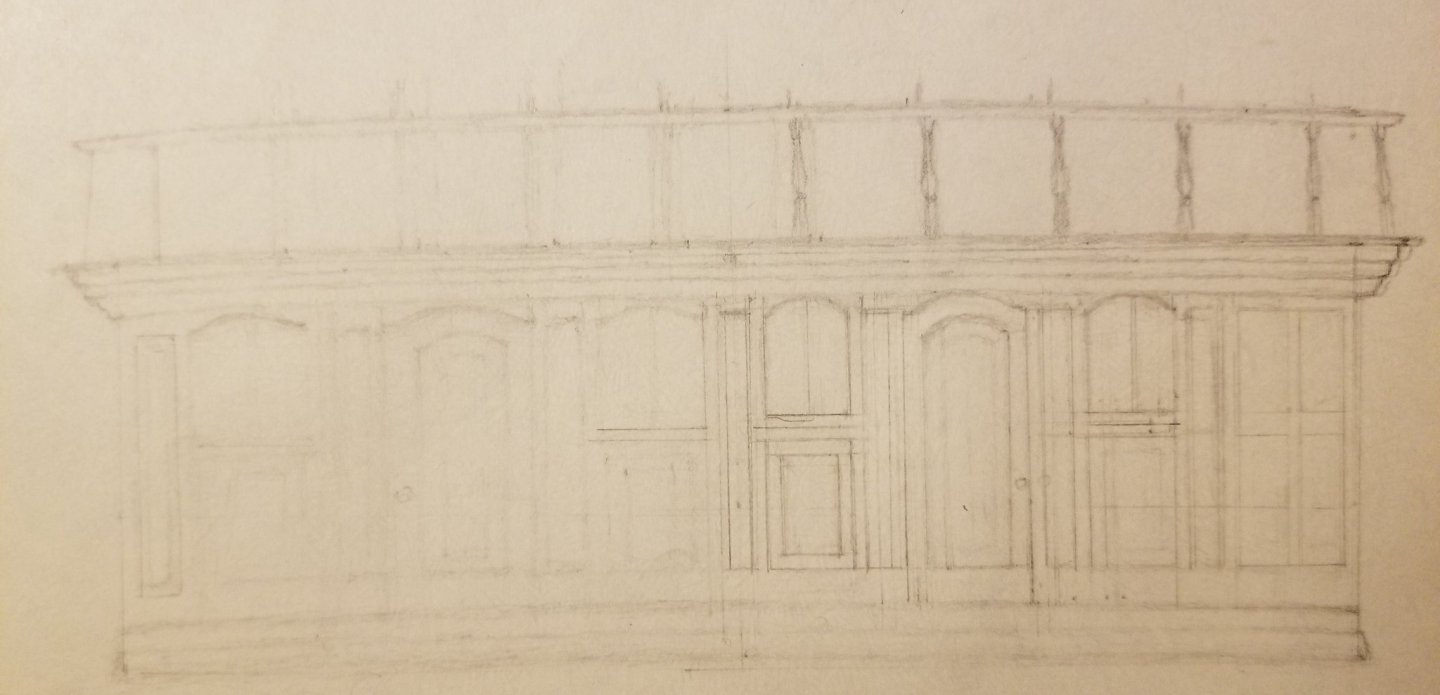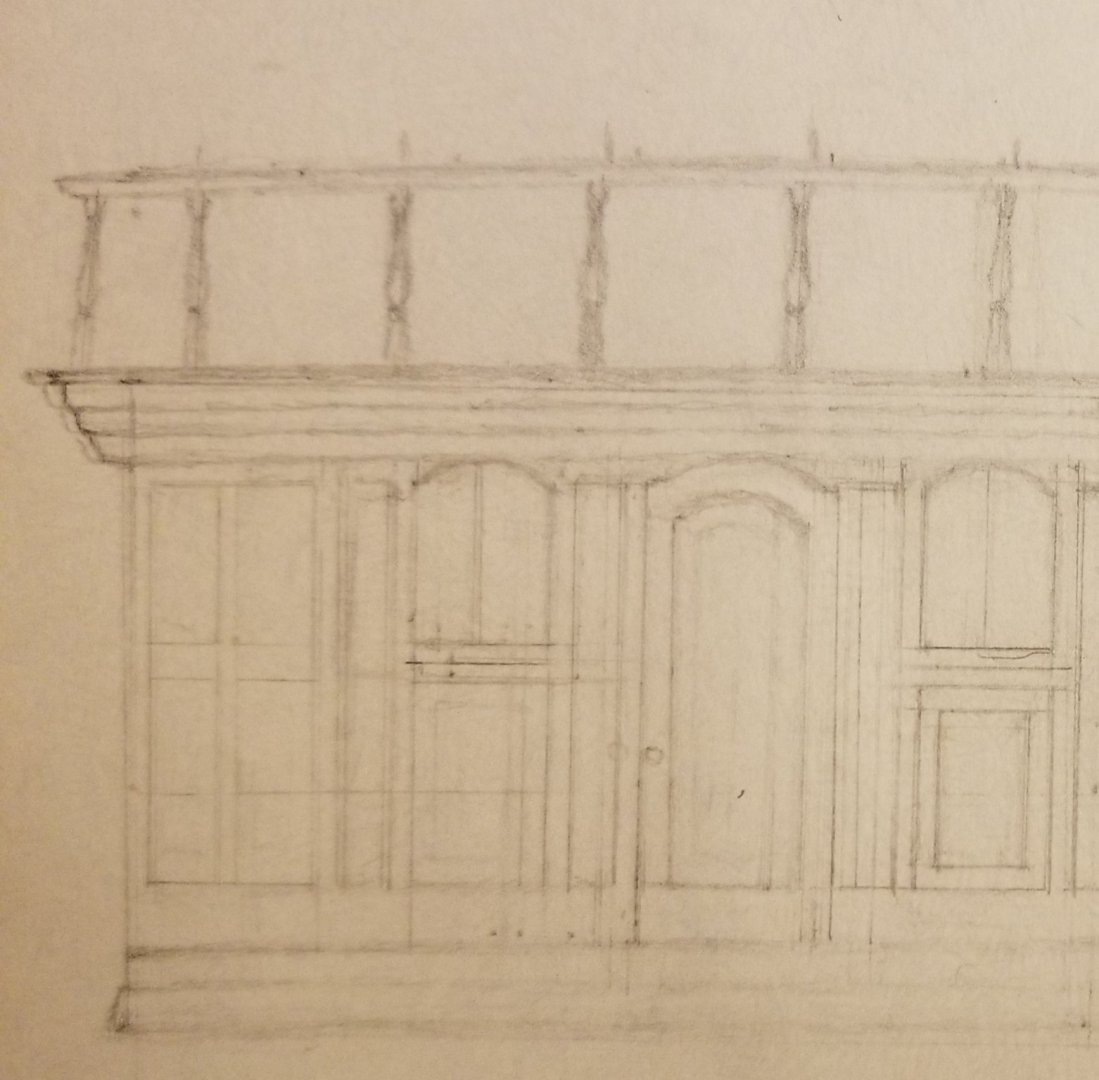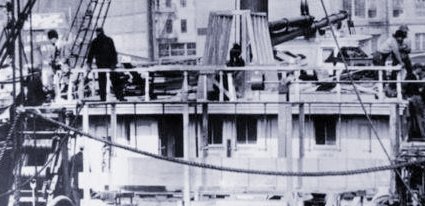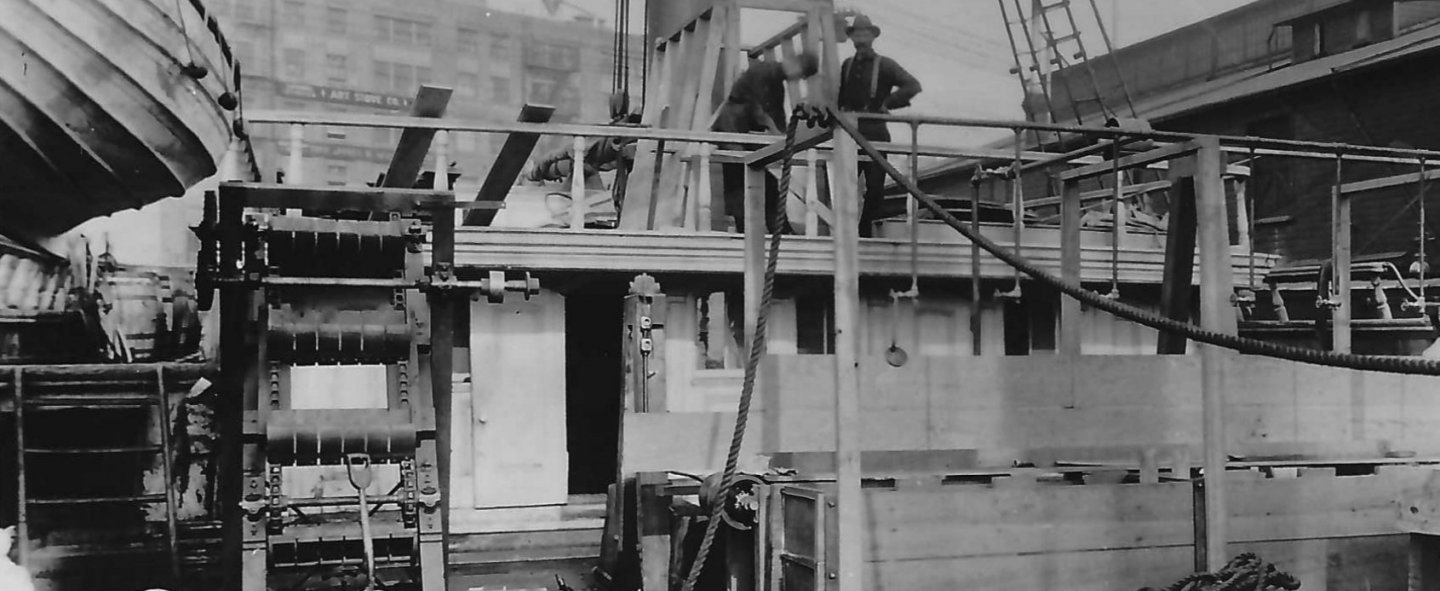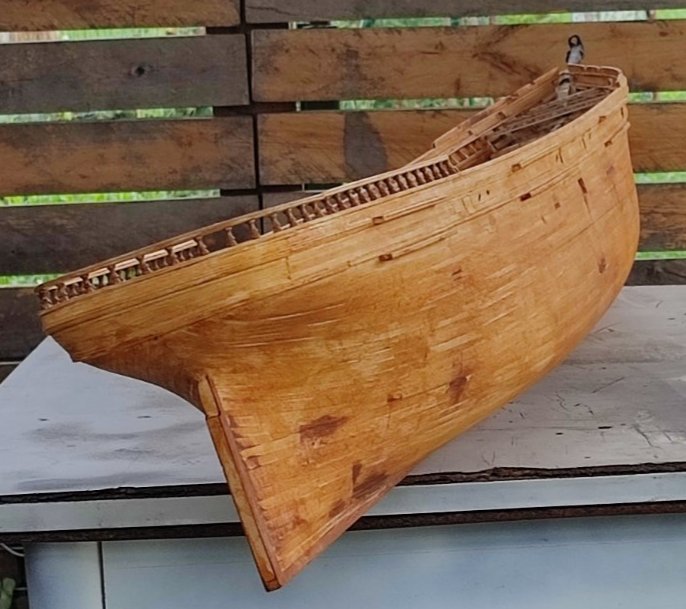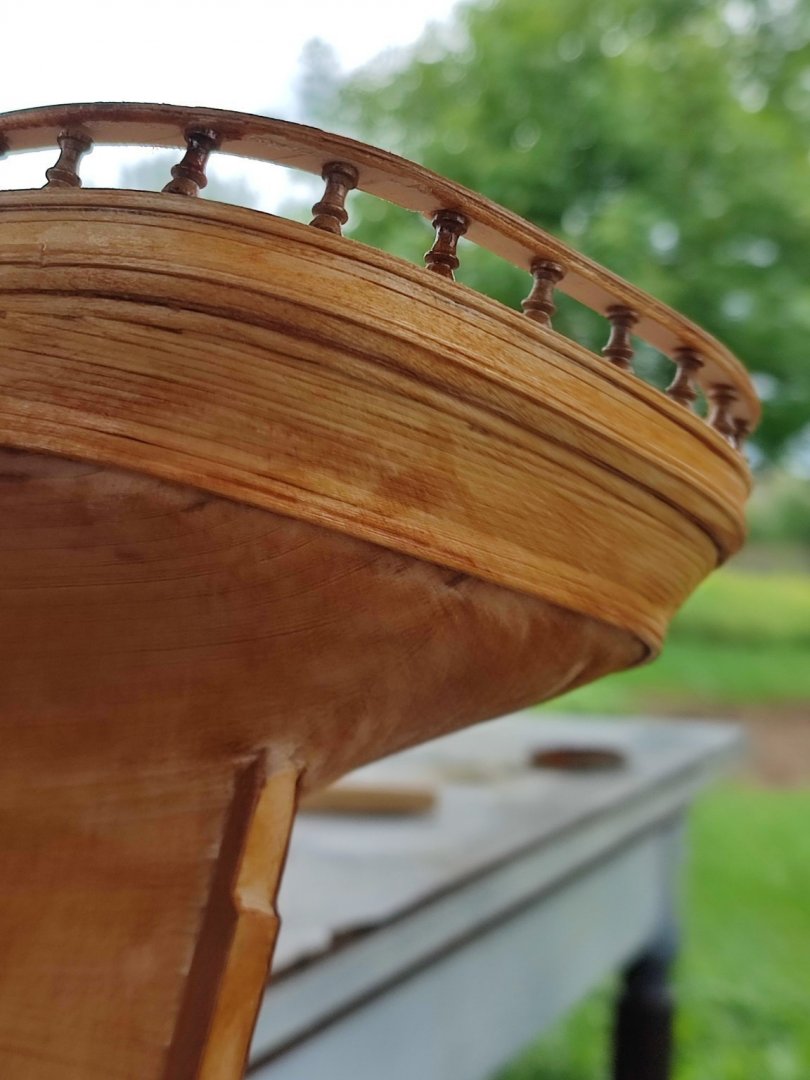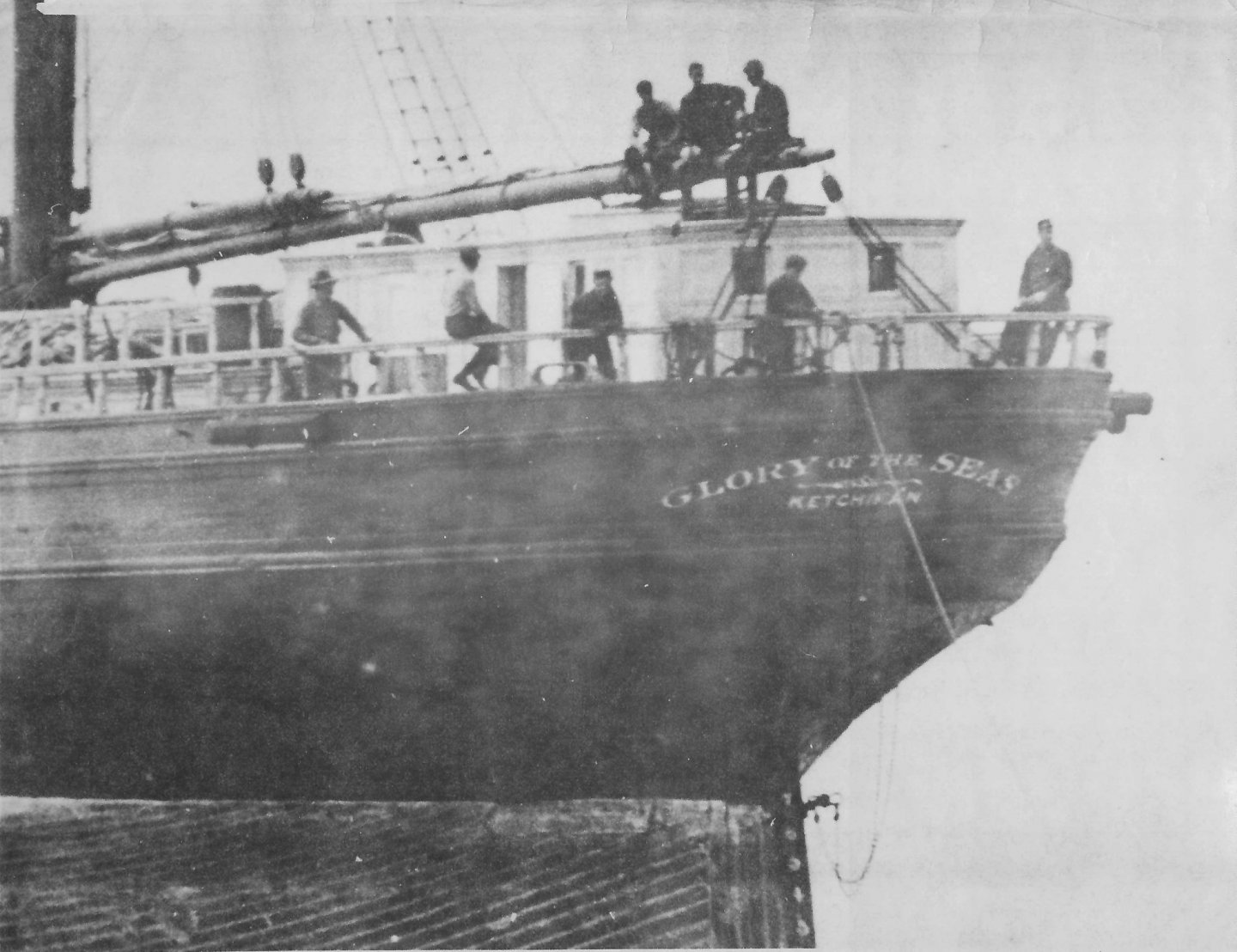-
Posts
2,152 -
Joined
-
Last visited
Content Type
Profiles
Forums
Gallery
Events
Everything posted by ClipperFan
-
Rob, sorry about the Pete & repeat post, I thought the 1st one failed. It wasn't til later I saw both.
- 3,560 replies
-
- clipper
- hull model
-
(and 2 more)
Tagged with:
-
Rob, at first I thought so too but if you look at Michael Mjelde's rear house blueprint (Clipper Ship Captain pg 175) it only shows 2 doors with state rooms occupying both outer corners. What supports this is that while both doors definitely have arches, the embossed area towards the corners are not.
- 3,560 replies
-
- clipper
- hull model
-
(and 2 more)
Tagged with:
-
Rob, I agree with the logic of your evaluation, especially since there is a raised section that the rail is bolted to on the roof. What throws me off is the relation of rail height to width of the house below. The 30" rail seems to be taller and thus makes the 24' house seem to be off somehow. I'm going to experiment with 28" height to see how much of a difference it makes.
- 3,560 replies
-
- clipper
- hull model
-
(and 2 more)
Tagged with:
-
Vladimir, great catch! You're right, it's subtle but definitely there. The base of the windows do indeed curve just so slightly parallel to the ship's deck. Which leads me to believe that so to will every other ornate element, since they would look out of place if they didn't follow suit. Another element that I'm still not settled on is the true height of the turned rails surrounding the house. Illustrated at 30" they look too tall. I find it hard to believe but they might actually be shorter. I've been toying with the idea of being 28" or even as short as 2'. Perhaps on a ship it was considered effective enough just to provide a barrier to determine the end of the house itself? It sounds crazy when compared to our 3' standard for all upper level decks in America today but we're looking back historically and these rails were definitely lower than 3'.
- 3,560 replies
-
- clipper
- hull model
-
(and 2 more)
Tagged with:
-
Vladimir, When it comes to highlighting "big, big rectangle windows" you're going to be disappointed. Other than her two large approximately 6' skylights in her rear house, all other windows on Glory are on the small side. In a 45' space on the sides, it appears the few windows are tiny, about 1' wide each. That's deliberate, in order to minimize potential for water from heavy seas entering inside her dwelling areas. The same goes for doors. You'd think in a 24' house, doors would be at least 3' but from what I can tell, they were 2'.
- 3,560 replies
-
- clipper
- hull model
-
(and 2 more)
Tagged with:
-
Rob, Of course you can! I've been creating these drawings specifically so you, Vladimir and anyone else who wants to, can recreate this Clipper with the most authenticity. I'm still working on a larger more detailed house and hope to have it done soon.
- 3,560 replies
-
- clipper
- hull model
-
(and 2 more)
Tagged with:
-
Pat, thanks, I appreciate the compliment. It is a work of love to promote the most accurate reproduction of McKay's last Clipper.
- 3,560 replies
-
- clipper
- hull model
-
(and 2 more)
Tagged with:
-
Rob, when I have a chance, I will gladly email you a pdf of the new Staples scan. Besides correcting copywrite date, already done, I also need to darken certain elements which are barely visible on prints. Mike relayed to me that he's still waiting for Ron Haug's response to clear proof that Glory's stern was definitely curvilinear and not round. I get the impression Ron might be a bit hard to convince(?)
- 3,560 replies
-
- clipper
- hull model
-
(and 2 more)
Tagged with:
-
Rob & Vladimir, here's my preliminary sketch of the somewhat ornate front face of Glory's rear 'Carriage' house with her upper turned stanchion rails. MacLean's stats say this house was 45' long x 24' wide × 8' high. Pictures show the house had a roughly 3' overhang. Contrary to expectations, the turned stanchions are not strictly verticle, nor all evenly spaced. It appears the 3 central stanchions were 2 & 1/2' apart, the remaining 6 on either side were 2 & 3/4' apart and the last 2 were 1 & 1/2 feet apart, for a total of 12 stanchions in all. The 4 windows appear to be 1 & 1/2' wide and both door seem to be sliding, not pivoting and are only 2' wide each. The left side slid out towards the left (as can be seen in this photo. I would expect the opposite door would slide out to the right. At the base is a double molding, the lowest appears to be painted blue, the upper would most likely be white, being a raised surface. All recessed areas would have been pearl and highlights white. The left side of my sketch is inaccurate, done before I realized how truly narrow the windows and doors really were. So to make things easier, I cropped the right side & flipped it to create a corresponding identical left one.
- 3,560 replies
-
- clipper
- hull model
-
(and 2 more)
Tagged with:
-
Rob, that's pretty tough for your poor wife. Give her my condolences for her difficult loss. When your last living relative passes, there's a peculiar loneliness that's attached to it.... By the way, I heard back from Mike after he received my Glory scan. He's asked for some prints so that he can send one to Ron Haug. This could get to be real interesting.....
- 3,560 replies
-
- clipper
- hull model
-
(and 2 more)
Tagged with:
-
Vladimir, what you've illustrated would be correct, as far as I can tell. All flat surfaces would have been pearl and all raised ones would have been white. There had to be enough of a difference in contrast to justify the added investment. Donald McKay's Clippers and even his Packets were all renowned for their top of the line quality, both of craftsmanship and ship's fittings. After all, Donald McKay was the main American contributor to the British James Baines Line, supplying 4 principal vessels to his franchise. Before British Regulars embarked to India to suppress a revolt, Queen Victoria paid a Royal visit to the vessels "James Baines" and "Champion of the Seas." She's known to have marveled that the British Empire had such magnificent vessels.
-
Rob, always there to help! Actually these "pearls" are very restful shades. On another matter, does anyone know if there's a way to upload Adobe pdf files? My 1:96 scale ship's lines of Glory are done. Staples scanned them & emailed me a copy but it's on a pdf file. They made print outs. That's when I realized I mistakenly put the date as 8/20/28. Since then I've corrected it to 8/28/21 but it has to be rescanned to get that corrected date.
-
Vladimir, frames ARE futtocks, there's no difference. To keep it simple, raised surfaces, ie inner moldings and frames are white, recessed panels on the ship's sides (bulwarks) & houses are pearl. Incidentally "pearl" is not grey nor buff as some Ships had grey (or gray) & buff interiors and are described as such. If you look up "mother of pearl" you'll get a better idea of pearl. To me it's kind of an elegant mixture of very light pinkish tan. The color blue Rob has for the waterways would go well with that, almost a wedgewood blue but a little darker. I'd play around with some shades to see how it looks before painting your model.
-
Vladimir, in nautical terms "brightwork" literally means naturally finished wood. Of course, it would actually be varnished too, in order to protect it against the elements. My guess is it would most likely be mahogany too. Since MacLean didn't distinguish between poop deck or rear house surrounding turned rails, I'd suspect all rails were left natural varnished. From my favorite painting by Samuel Walters the top of the rear house railing is white while the turned rails are brown. What's even more confusing is the ship's actual appearance from her 1869 fitting out in East Boston it looks like all turned rails including poop rails and rear house all seem to be painted white, since you can see the contrasting light shade versus the men standing behind them. Since that's clear photographic evidence I would go with that. MacLean's descriptions, I suspect were given to him by the Shipyard and the photos apparently don't match.
-
Rob, my condolences on your loss. Funerals are such powerfully emotional events. When you live a great distance from family, sometimes the only times you get together is either Weddings or Funerals...
- 3,560 replies
-
- clipper
- hull model
-
(and 2 more)
Tagged with:
-
Rob, here's the specs on two other McKay Clippers: 1851 "Flying Fish" All masts rake alike: 1 & 1/4" to 1' 1852 "Sovereign of the Seas" Fore: 6/8ths" to 1' Main: 7/8ths" to 1' Mizzen: 1&1/8th" to 1' It's very hard to read in Mike's 2nd book "Clipper Ship Captain" it almost looks like 96 degrees but from the near verticle pitch of all 3 masts it's got to be 98 degrees, meaning 2 degrees off verticle, since 4 degrees would be more of a rake. Incidentally "Sovereign of the Seas" registered 2,421 tons. She's described as being 11'8" 'through the backbone.' While no such specifics were given for "GLORY of the SEAS" using the same accounting method as ascribed to "Stag Hound" I was able to come up with a similar figure, very close to the Sovereign's. This is important to know for anyone planning to step Glory's masts, since they're obviously mounted above the backbone, which consisted of much more than the 29" keel and shoe alone.
- 3,560 replies
-
- clipper
- hull model
-
(and 2 more)
Tagged with:
About us
Modelshipworld - Advancing Ship Modeling through Research
SSL Secured
Your security is important for us so this Website is SSL-Secured
NRG Mailing Address
Nautical Research Guild
237 South Lincoln Street
Westmont IL, 60559-1917
Model Ship World ® and the MSW logo are Registered Trademarks, and belong to the Nautical Research Guild (United States Patent and Trademark Office: No. 6,929,264 & No. 6,929,274, registered Dec. 20, 2022)
Helpful Links
About the NRG
If you enjoy building ship models that are historically accurate as well as beautiful, then The Nautical Research Guild (NRG) is just right for you.
The Guild is a non-profit educational organization whose mission is to “Advance Ship Modeling Through Research”. We provide support to our members in their efforts to raise the quality of their model ships.
The Nautical Research Guild has published our world-renowned quarterly magazine, The Nautical Research Journal, since 1955. The pages of the Journal are full of articles by accomplished ship modelers who show you how they create those exquisite details on their models, and by maritime historians who show you the correct details to build. The Journal is available in both print and digital editions. Go to the NRG web site (www.thenrg.org) to download a complimentary digital copy of the Journal. The NRG also publishes plan sets, books and compilations of back issues of the Journal and the former Ships in Scale and Model Ship Builder magazines.

